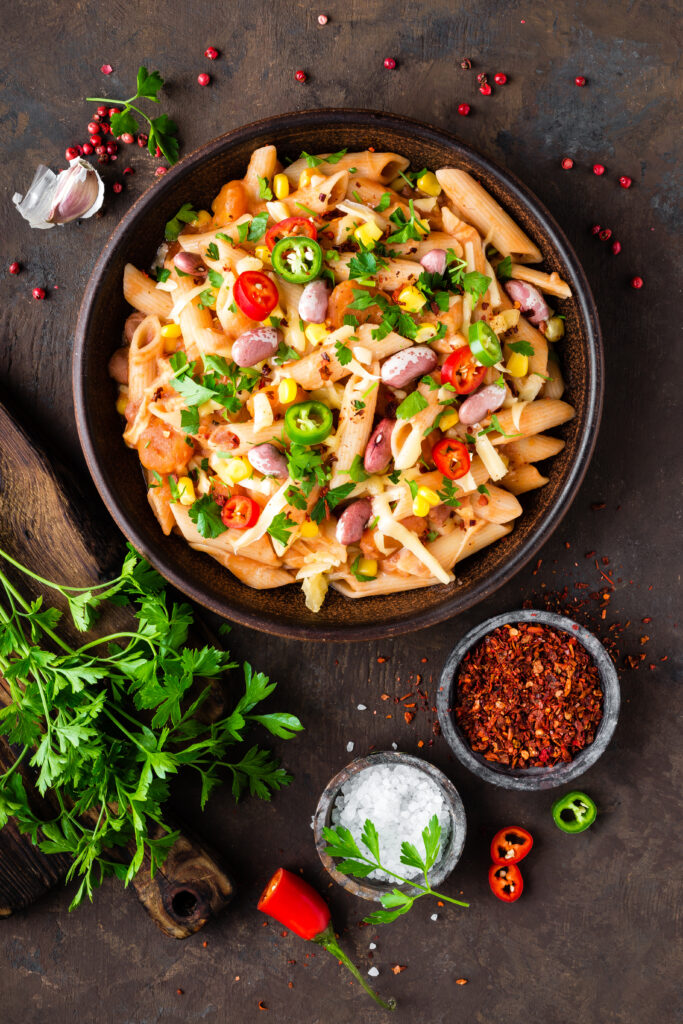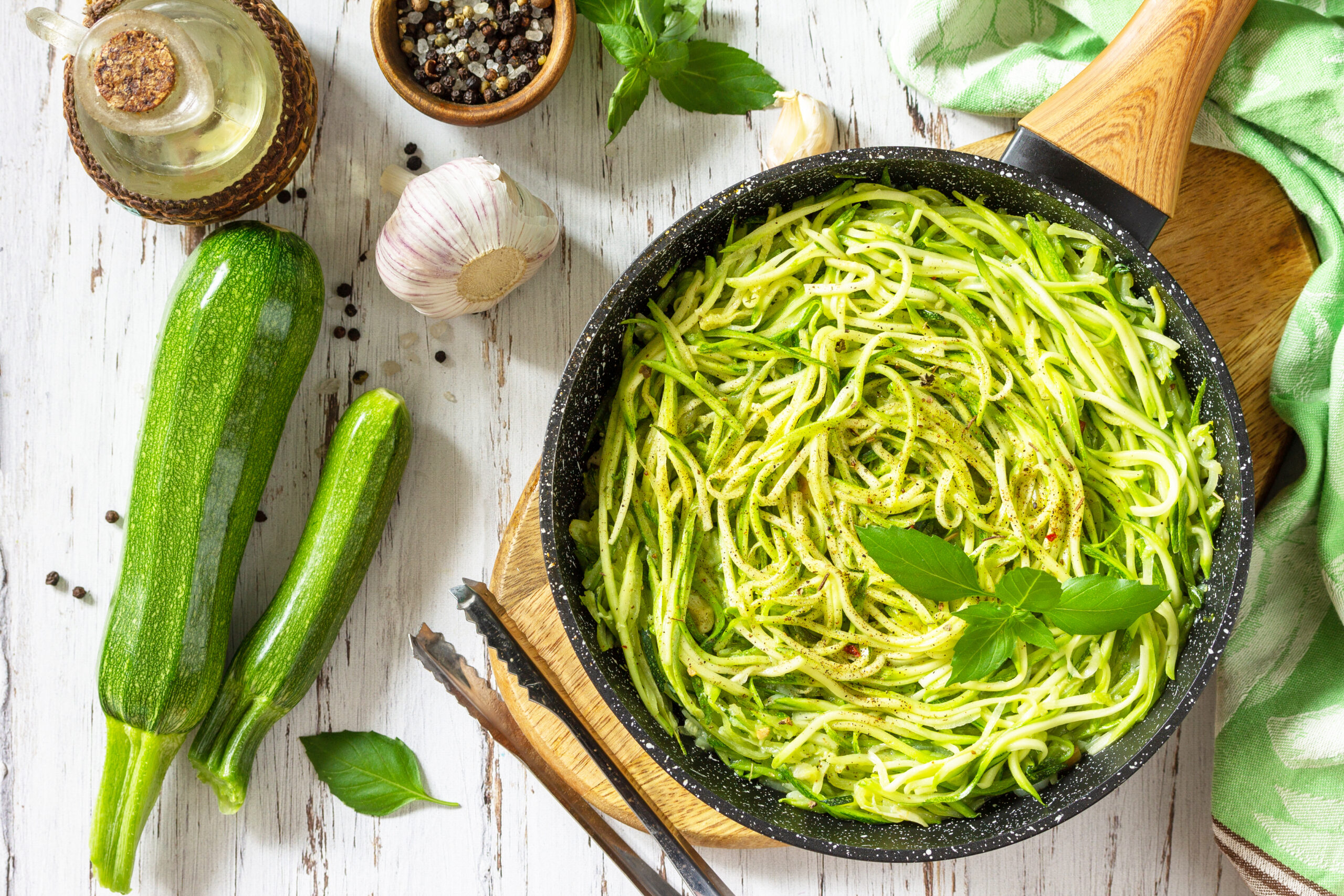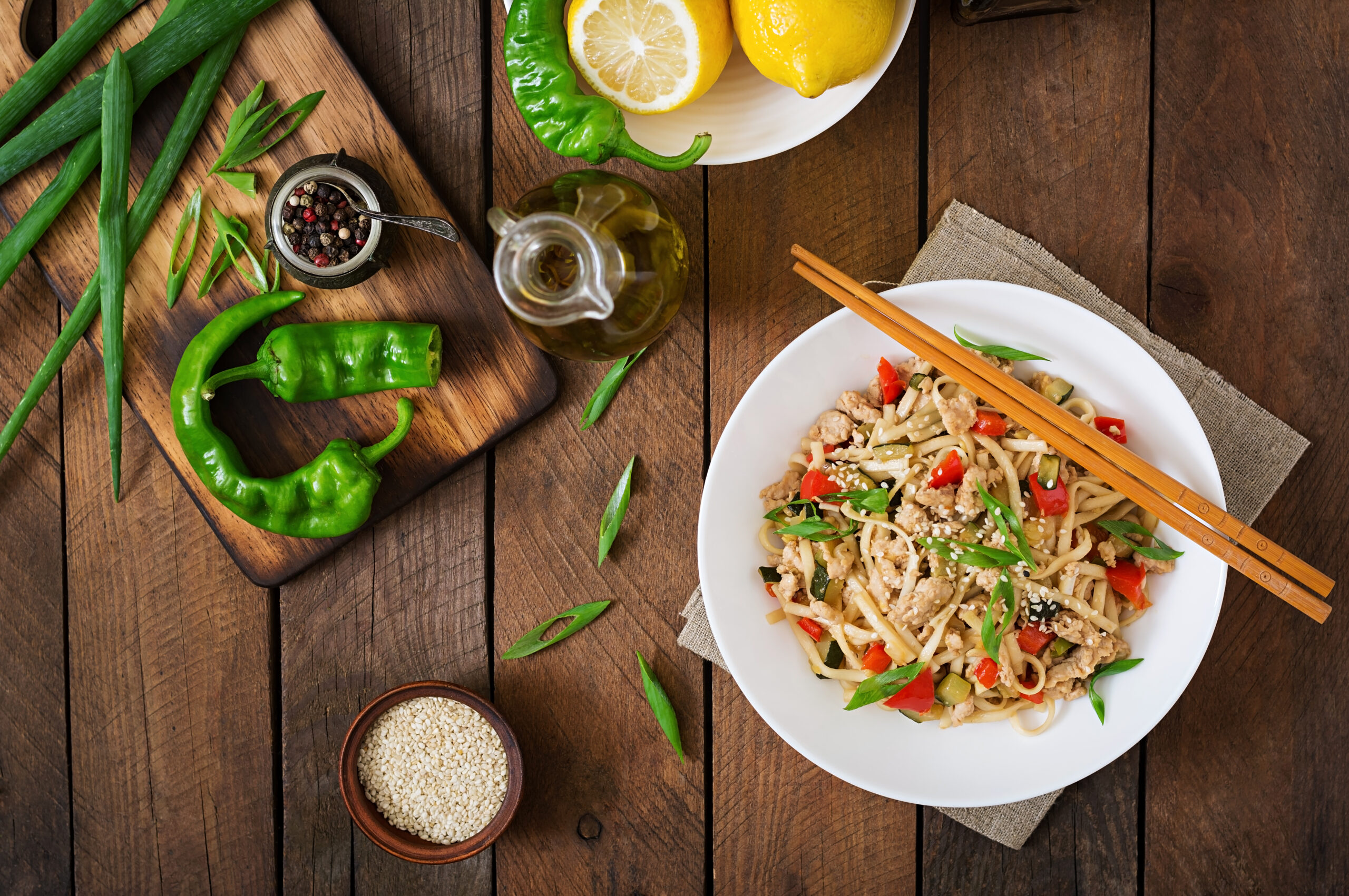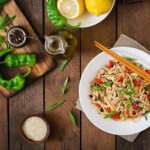If you’re a pasta lover trying to shed a few pounds or lower your blood sugar, you might be wondering if your favorite carb-heavy dish can still fit into a weight-loss plan. It can! And studies have proven this but you need to eat it in moderation and have the right recipe to prevent weight gain. Let’s break it down!
Is Pasta Healthy for Weight Loss?

Yes, pasta can be part of a healthy weight loss plan! A cup of cooked refined pasta or durum wheat pasta has just around 200 calories. If you want to reduce the number of calories and make it healthier, you can use whole wheat pasta. It has fewer calories and is packed with fiber to help you feel full longer. Also, consider not using sauces directly from jars and avoid using cream. You can try making a homemade tomato or marinara sauce instead.
How to Make Healthy Pasta for Weight Loss
Cooking pasta is easy. Here’s how to do it:
Ingredients:
- 1 cup of whole-grains pasta or brown rice pasta. You can also use legume-based pasta like chickpea or lentil
- 1 chicken breast (about 4-6 ounces) or 1 cup of tofu/shrimp
- 2 cups of mixed vegetables (spinach, zucchini, tomatoes, or bell peppers)
- 1 tablespoon olive oil
- 1-2 cloves garlic (minced)
- 1/4 cup homemade tomato sauce* (see below)
- 1 tablespoon lemon juice
- 1 tablespoon grated Parmesan or nutritional yeast
- Fresh herbs (like basil or parsley) for garnish
- Salt and pepper to taste
For Homemade Marinara Sauce*:
- 1 tablespoon olive oil
- 1/2 small onion, finely chopped
- 2-3 cloves garlic, minced
- 1 can (14.5 oz) diced tomatoes or crushed tomatoes
- 1 teaspoon dried oregano
- 1/2 teaspoon dried basil
- Salt and pepper to taste
Instructions:
- Bring a large pot of salted water to a boil.
- Add your whole-grain or legume-based pasta. Cook according to package instructions until al dente. This will take around 8-10 minutes.
- Drain the pasta using a colander. Keep aside 1/4 cup of pasta water for later. Set the pasta aside. Do not rinse it.
- If you’re adding protein, grill or sauté 1 chicken breast or 1 cup of shrimp/tofu. Season the protein lightly with salt, pepper, a squeeze of lemon juice, and any herbs you like (basil or oregano works well).
- Set the cooked protein aside and cover it loosely with foil to keep warm.
- In a large skillet, heat 1 tablespoon of olive oil over medium heat.
- Chop up 2 cups of vegetables like spinach, zucchini, tomatoes, or bell peppers.
- Sauté for about 5-7 minutes, or until the vegetables are tender. Season with a pinch of salt and pepper.
- Transfer the veggies to a bowl and set aside.
- Now time to make the marinara. Heat 1 tablespoon of olive oil in the same skillet over medium heat.
- Add 1/2 finely chopped small onion and sauté for 2-3 minutes until soft.
- Add 2-3 minced garlic cloves and cook for another minute, until fragrant.
- Pour in 1 can (14.5 oz) of diced or crushed tomatoes, 1 teaspoon of oregano, 1/2 teaspoon dried basil, and a pinch of red pepper flakes (optional for spice).
- Season with salt and pepper.
- Simmer for 10-15 minutes until the sauce thickens slightly. Taste and adjust seasonings as needed.
- Add the cooked pasta to the skillet with the sauce.
- Stir to coat the pasta in the sauce. Add the pasta water you set aside earlier.
- Add the sautéed vegetables and mix everything together.
- Let it cook together for 1-2 minutes to combine the flavors.
- Add your sliced chicken, shrimp, or tofu.
- Top the pasta with grated Parmesan.
- Sprinkle fresh herbs (like basil or parsley) on top.
Healthy Pasta Tips
If you don’t want to gain weight when eating pasta, follow these tips below:
- For each portion, include just 1 cup of pasta.
- While olive oil is healthy, it’s easy to overuse it. Stick to 1 tablespoon of oil when cooking or making sauces.
- Opt for tomato-based sauces instead of cream-based.
- Include lots of vegetables and spices in your pasta dishes. Vegetables are very low in calories while spices genuinely have negligent calories.
- Do not use pre-packaged sauces. They consider a lot of added sugars and unhealthy fats.
What Can You Use Instead of Pasta?

If you’re looking to switch things up or cut down on carbs, there are plenty of tasty alternatives to traditional pasta. Here are some great options that will satisfy you.
Zucchini Noodles or Zoodles: You can make these yourself or buy pre-made ones.
Spaghetti Squash: When cooked, spaghetti squash naturally forms noodle-like strands. Just roast it, scrape out the strands, and serve with your favorite sauce.
Shirataki Noodles: Shirataki noodles are made from konjac root and are incredibly low in calories. They’re a bit chewy, but once you rinse them and pair them with sauce, they can make a great pasta substitute.
Palmini Noodles: These are made from hearts of palm and have a slightly firmer texture compared to traditional pasta.
Summary
You can eat pasta as part of your balanced diet and still lose weight, but it’s important to be mindful. Stick to the right portions, choose whole-grain pasta, and add ingredients like vegetables and lean protein for a healthy diet.
Looking to make your own pasta dish? With the MisterChef Pasta Maker, you can easily create fresh, homemade pasta right in your kitchen. It’s simple to use, quick to clean, and lets you control exactly what goes into your pasta. Shop with us today.







